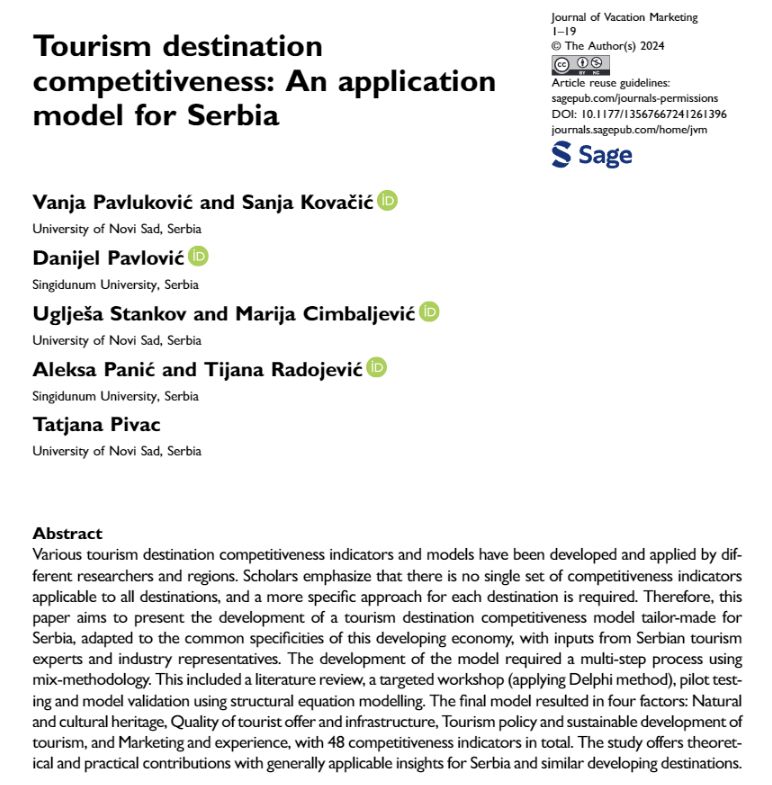Abstract
Various tourism destination competitiveness indicators and models have been developed and applied by different researchers and regions. Scholars emphasize that there is no single set of competitiveness indicators applicable to all destinations, and a more specific approach for each destination is required. Therefore, this paper aims to present the development of a tourism destination competitiveness model tailor-made for Serbia, adapted to the common specificities of this developing economy, with inputs from Serbian tourism experts and industry representatives. The development of the model required a multi-step process using mix-methodology. This included a literature review, a targeted workshop (applying Delphi method), pilot testing and model validation using structural equation modelling. The final model resulted in four factors: Natural and cultural heritage, Quality of tourist offer and infrastructure, Tourism policy and sustainable development of tourism, and Marketing and experience, with 48 competitiveness indicators in total. The study offers theoretical and practical contributions with generally applicable insights for Serbia and similar developing destinations.

